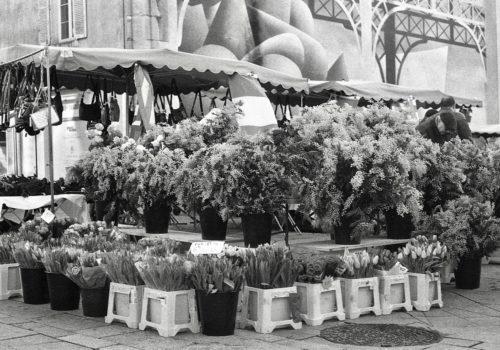In this chapter, Jacques Revon explores the use of an ecological alternative developer made with 3 aromatic herbs: Sage, Peppermint and Thyme.
“Film photography is initially authentic because the negative remains, even if one day it is scanned and therefore becomes digital at the risk, as we know, of being later manipulated.” – JR
Sheet 8. Making an alternative developer in a quantity of 1 liter ready to use, with 3 aromatic herbs: Sage, Peppermint and Thyme.
A development test was also carried out in a developer composed this time of Sage, Mint and Rosemary.
Development of 24X36 / 36 views / 125 ISO films and 120 / 6X6 format films with 12 views / 100 ISO.
- Mix your two liquids well in the same container (in a bottle for example). 900 to 1000 ml of developer are thus obtained.
- Filter the mixture again, this time using a paper filter, such as a coffee filter, so as not to leave any fine particles. I also advise you, before using your developer, to shake it well in the bottle before pouring it into your developing tank.
- Before developing and while preparing the emulsion for development, always pre-wet the film for five minutes in temperate distilled water, then proceed to development.
- Fixation duration 3 minutes here in HYPAM Ilford 1+4 at 20°.
- Washing. To save water, when washing your film, I still suggest the method recommended by Jost j. Marchesi in the book “Ilford Procédé Négatif” published in 1980 by Editions Jean Spinatsch in Geneva, on the condition that you have carried out, as here, the operation of fixing your film with the Hypam fixer.
- Drying. The film or film is then dipped in a wetting agent for 30 seconds, which, I remind you again, helps reduce the surface tension of the water and thus promotes the regular runoff of water adhering to the surface of the film, or Soak your film, still in the coil, in demineralized water for one minute, before hanging it weighted so that it dries in the open air.
















